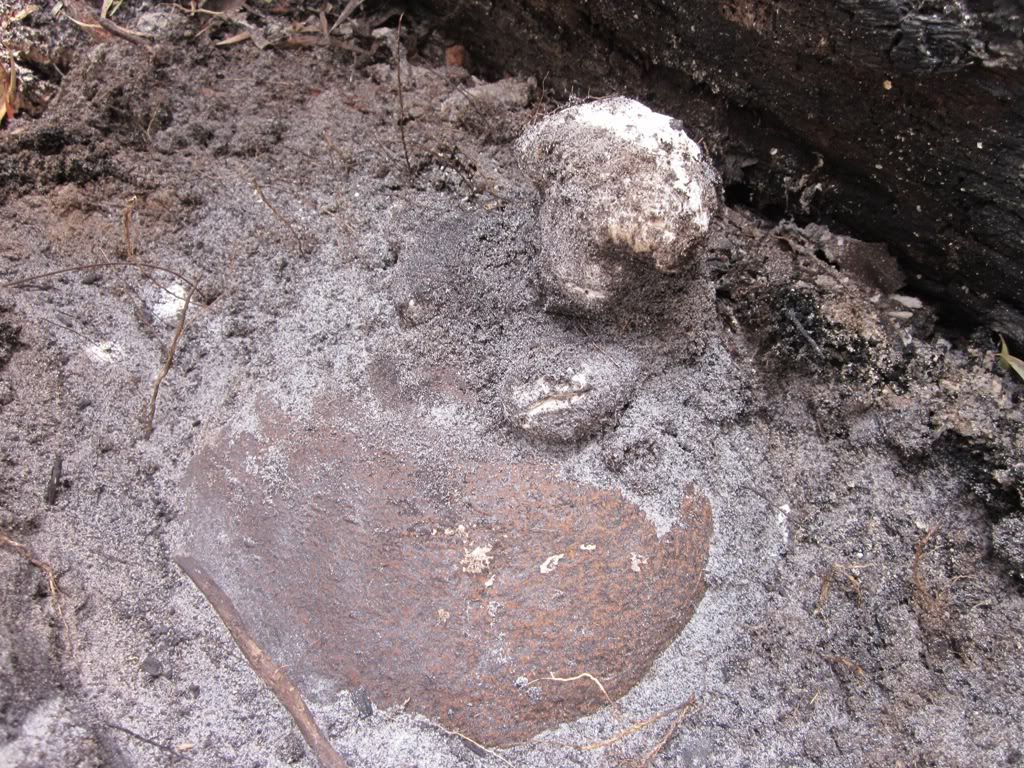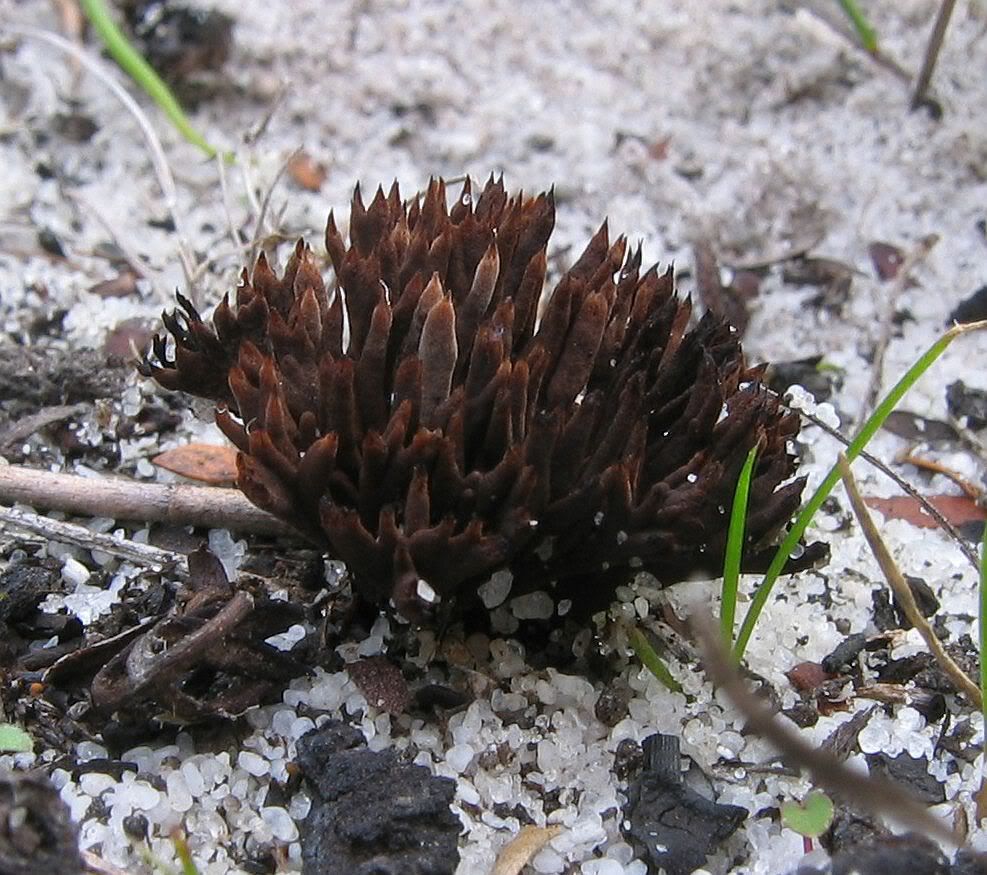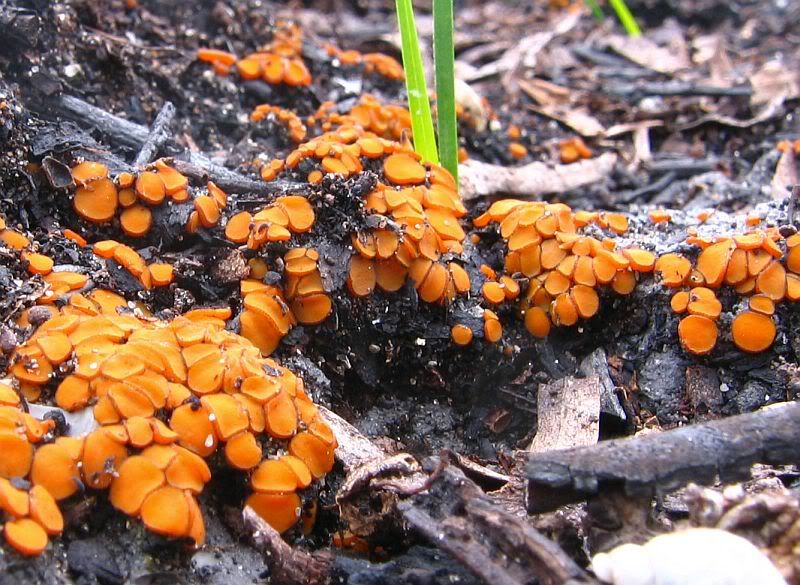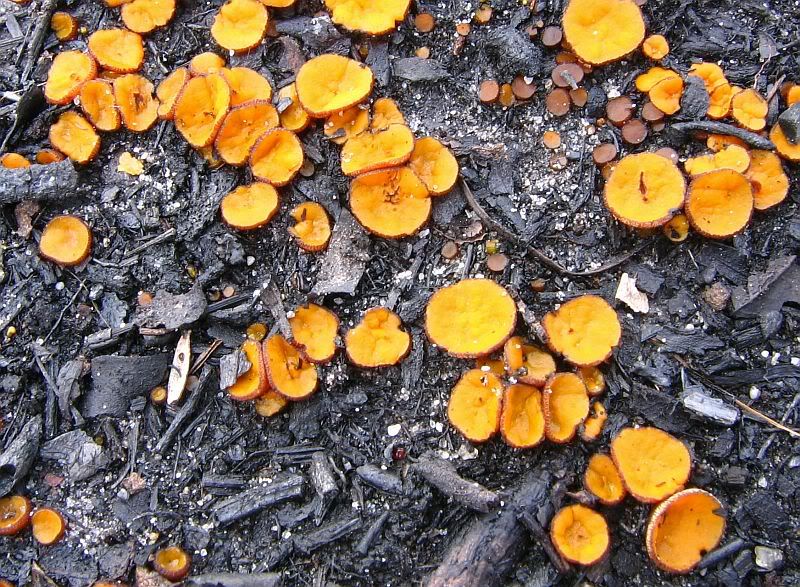| Reply to Thread New Thread |
|
|
#1 |
|
|
A couple of weeks ago, I and some friends liaised with the rangers in part of the Bunyip State Forest, West Gippsland area, to observe some of the fungi that appear after fire. There had been a couple of controlled burns, and after a little rain, we found some common fungi that seem to need the fire to fruit.
Stonemaker fungi were there, in the shape of many Laccocephalum tumulosum specimens, which have tough, leathery tissue, with strongly decurrent white pores. These are attached to a sclerotium, an underground mass of hyphae and soil, sometimes quite large and deep under the ground. We tried digging them out, but the ground was too tough and fibrous for our small shovels. This one had a small amount of sclerotium attached to it in the soil:-  Here is another shot, coming up under a log:-  There is also a Cortinarius that comes up after fire, and we found that. Like all of that genus, it has rust-coloured spores and remnants of a cobweb-like veil. This is Cortinarius sublargus:-  ... and it has a deep root of fibrous tissue:-  There is also an agaric that has unusual serrated edges to the gills, and a kind of multi-fingered sclerotium under the ground - unfortunately, we couln't find that part. It's called Neolentinus dactyloides, and varies quite a bit in appearance. But here's what we saw, and it is believed to be that species. Personally, I'm not sure, but Tom May from the Melbourne Herbarium gave it that name:-  For the sake of variety, there is a kind of puffball that comes up after fire, and rapidly ages, breaks open, and disperse its powdery spore mass via wind and water, leaving a characteristic shape like this. It's about 15 mm in diameter, and is called Nothocastoreum cretaceum:-  Usually, the first fungus to grow, directly on the charred soil, is a pink mass spreading in patches all over the surface. It is an ascomycete called Pyronema omphalodes, and is shown here, with an inset closeup of the rather formless texture showing that it's made up of coalescing small orange masses:-  There were also a few miscellaneous specimens of unidentifiable Cortinarius species here and there, but the above examples are the main fungi seen in two separate sites. There are also a few examples of other very tough Laccocephalum species that come up soon after fire, but we didn't see them on this foray. There are myriads of different fungal species living with their hyphae (the threads making up the body of the organism) in the soil, just waiting for the right conditions to grow and fruit. The essential trigger is always moisture, but as you can see, there are fungi for which the heat (or smoke?) of fire is also an essential requirement. |
|
|
|
|
#2 |
|
|
Nice post elfram. We get a lot of the same fungi here. I was particularly interested that you identified the pink stuff that comes out on the charred soil. I have that all over my burn heaps and have been wondering what it was. Thanks. Another fire fungus that is great fun to find is Polyporus mylittae. I have seen hundreds of these in the karri forest after a fire.

|
|
|
|
|
#6 |
|
|
Morrie, I have yet to see Polyporus mylittae. Probably not here in the wet SE forests, but more common in drier forest, woodland and semiarid country. Can anyone enlighten me?
LooktoSee, they are just wonderful photographs of those different orange ascomycetes after fire! And the brownish small coral is so unusual! |
|
|
|
|
#7 |
|
|
Morrie, I have yet to see Polyporus mylittae. Probably not here in the wet SE forests, but more common in drier forest, woodland and semiarid country. Can anyone enlighten me? We have had such extensive fires through here in the dryer months just past. I intend to explore the burnt forest from July onwards to see if there are any morels growing there. They are another fire fungus that stores up reserves. I have only found a single specimen here quite a few years ago. |
|
|
|
|
#8 |
|
|
|
|
|
| Reply to Thread New Thread |
«
Previous Thread
|
Next Thread
»
| Currently Active Users Viewing This Thread: 1 (0 members and 1 guests) | |
|
|










 Linear Mode
Linear Mode


